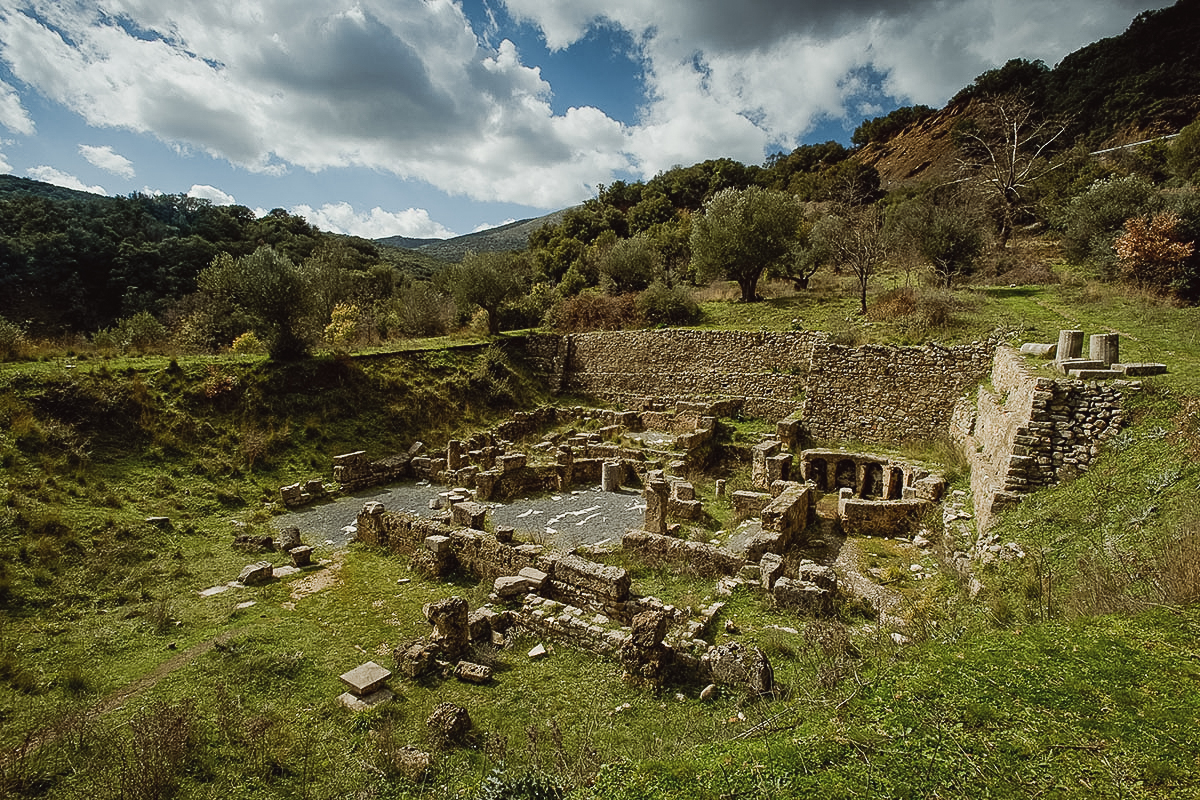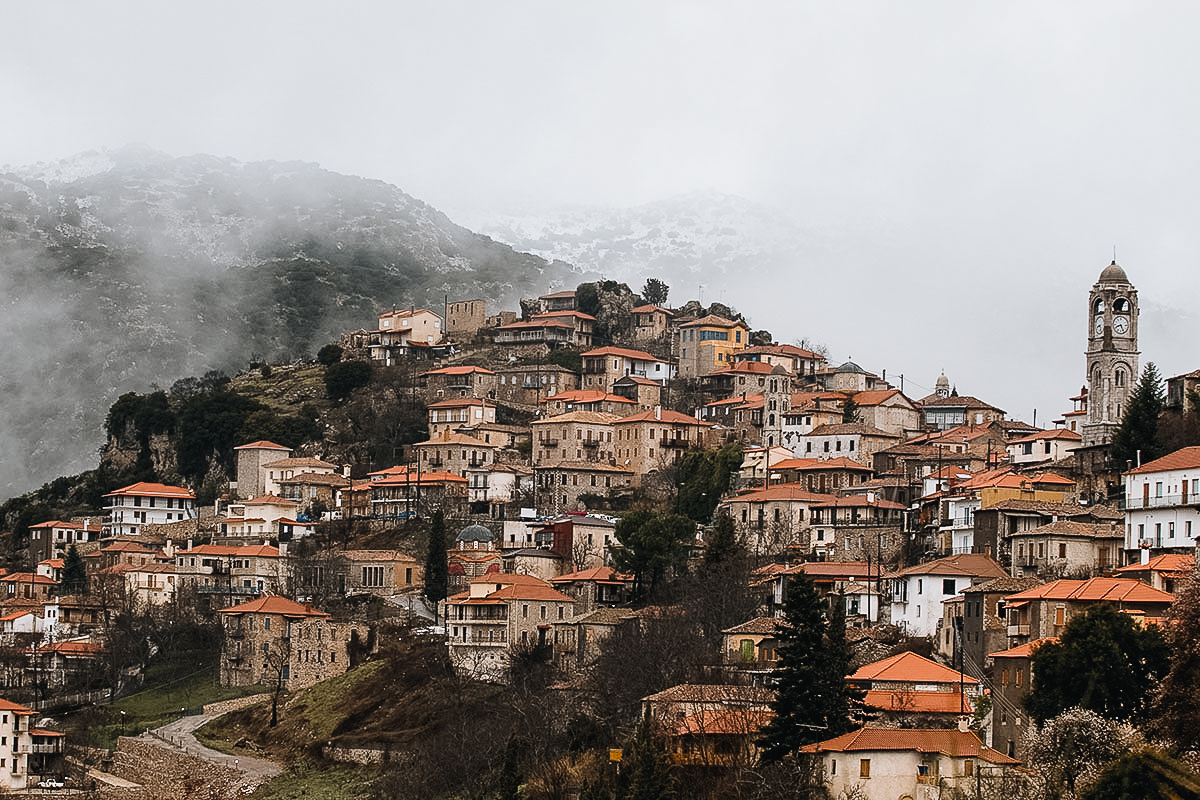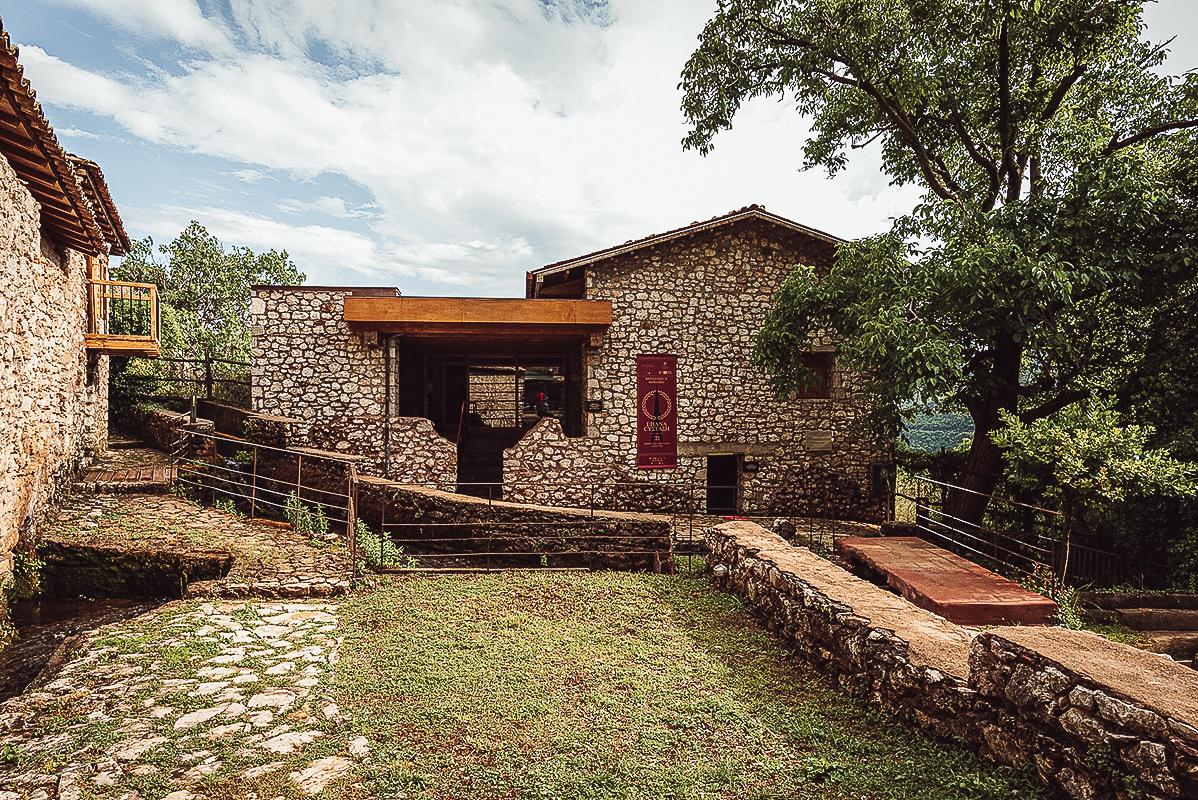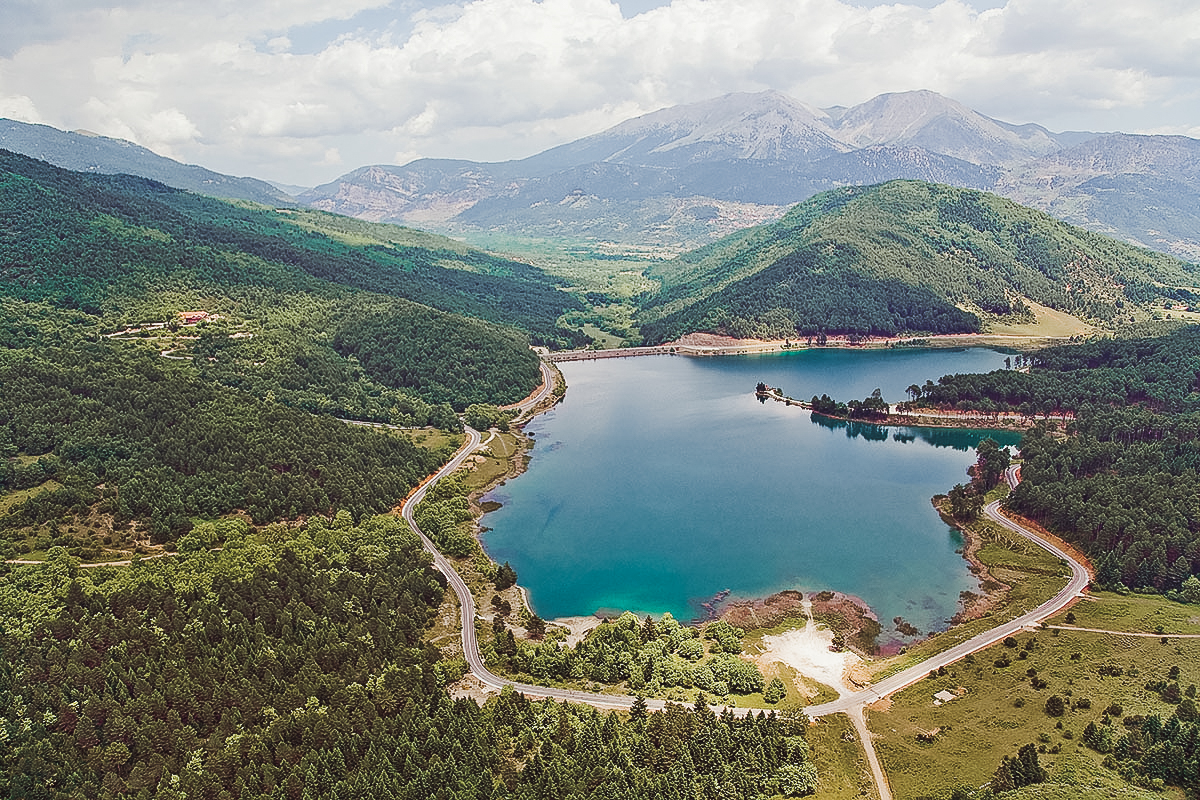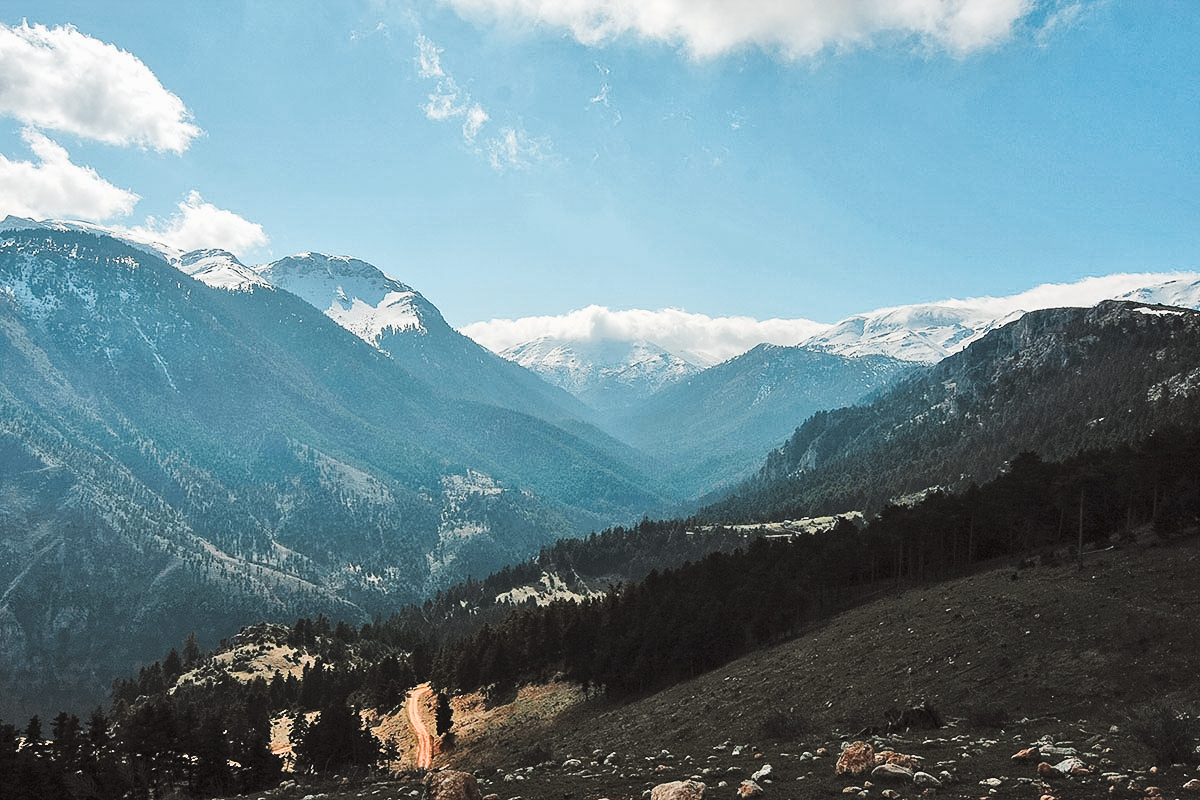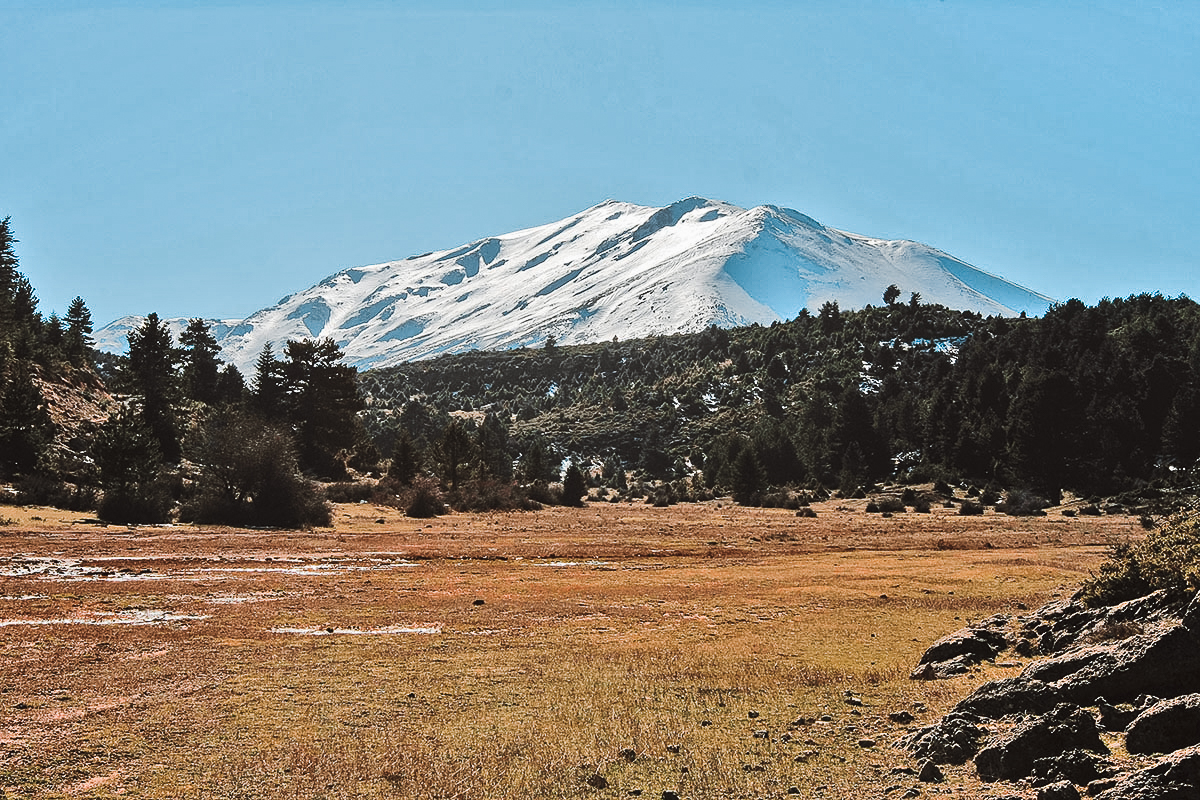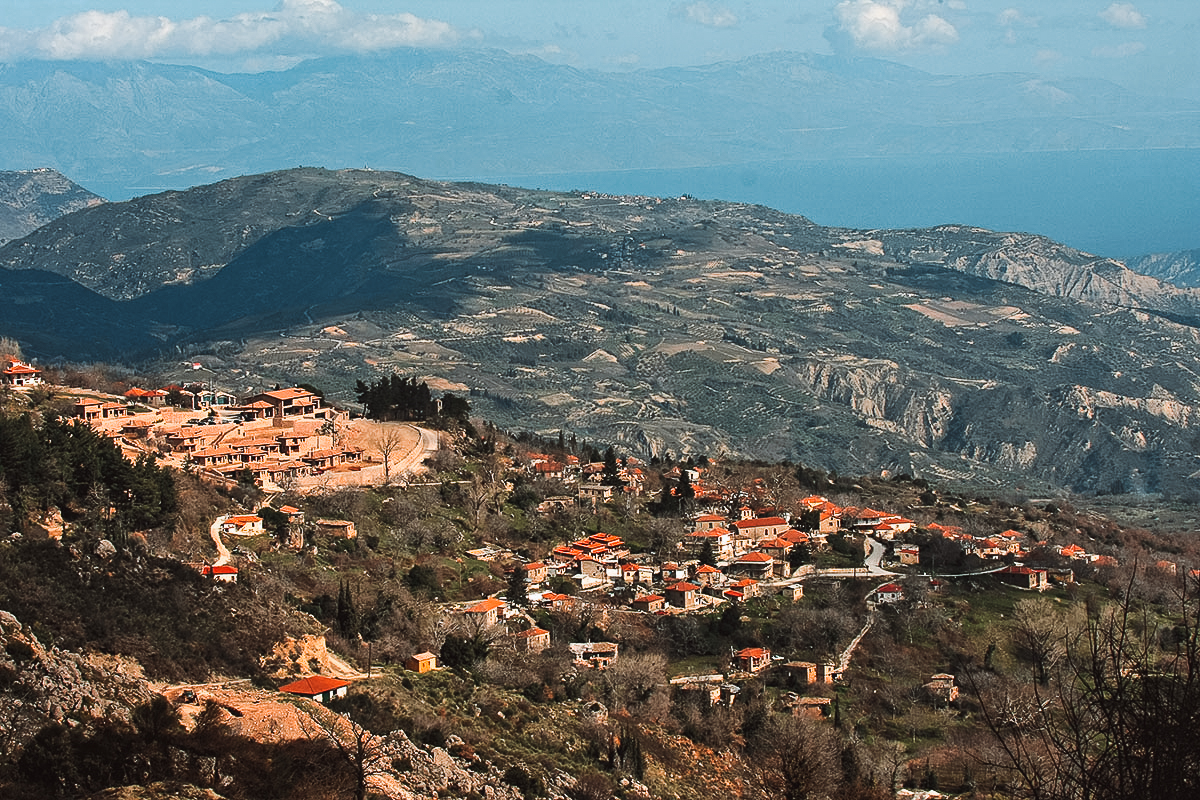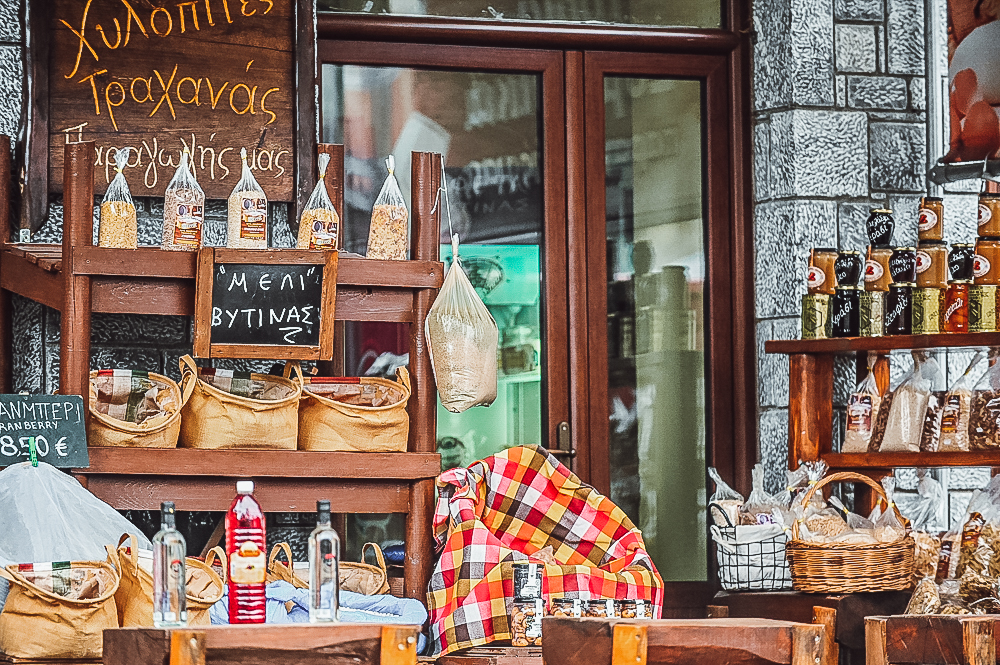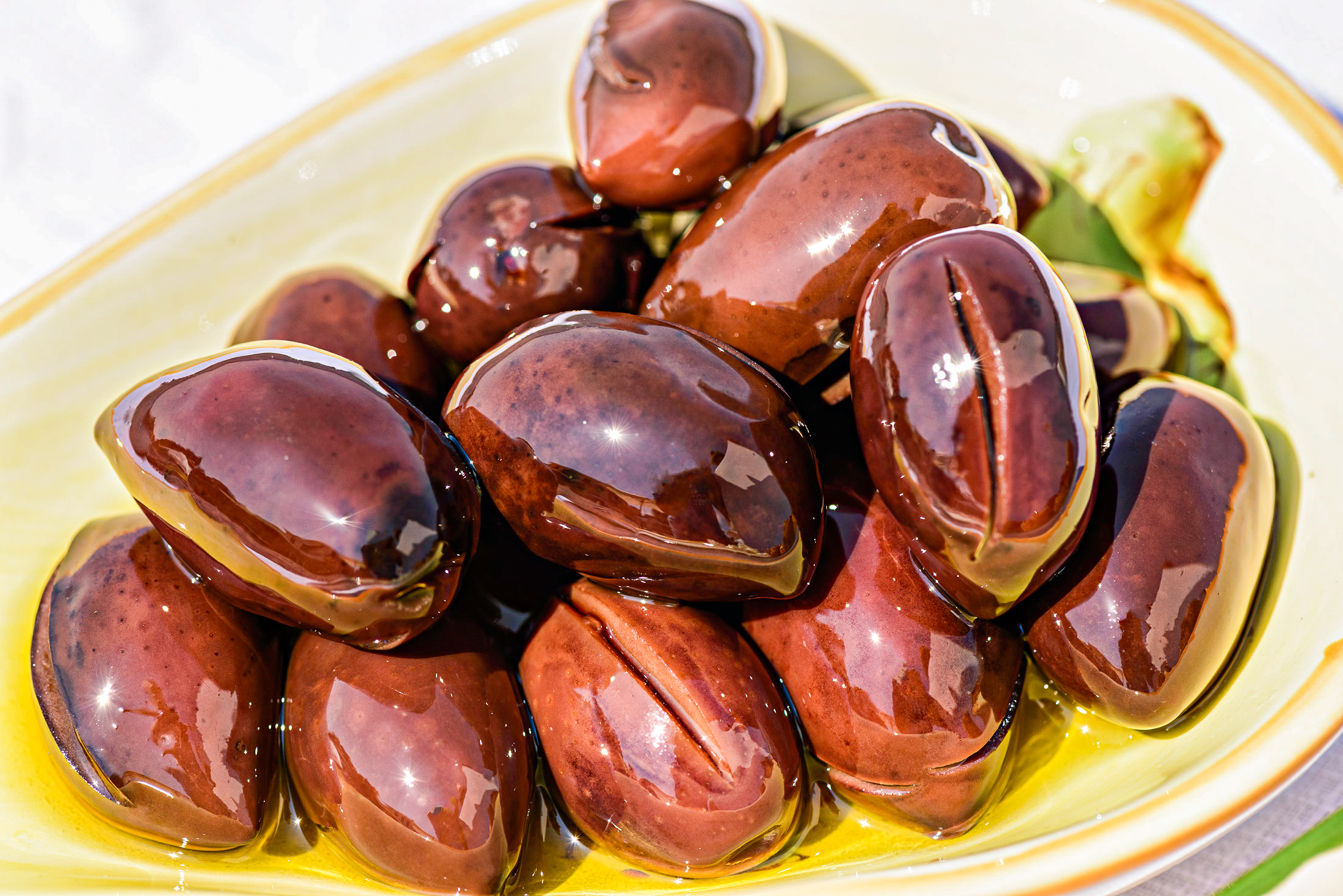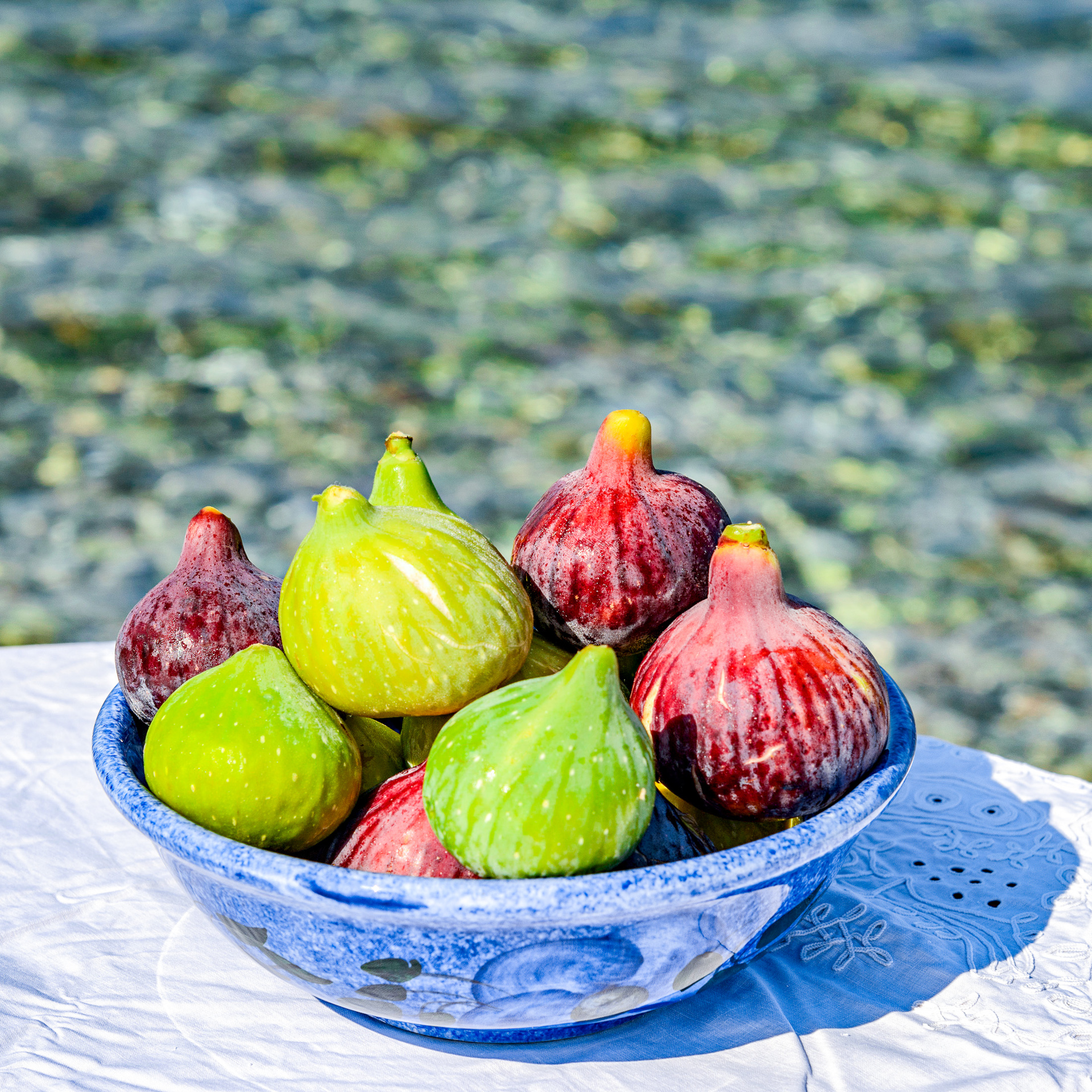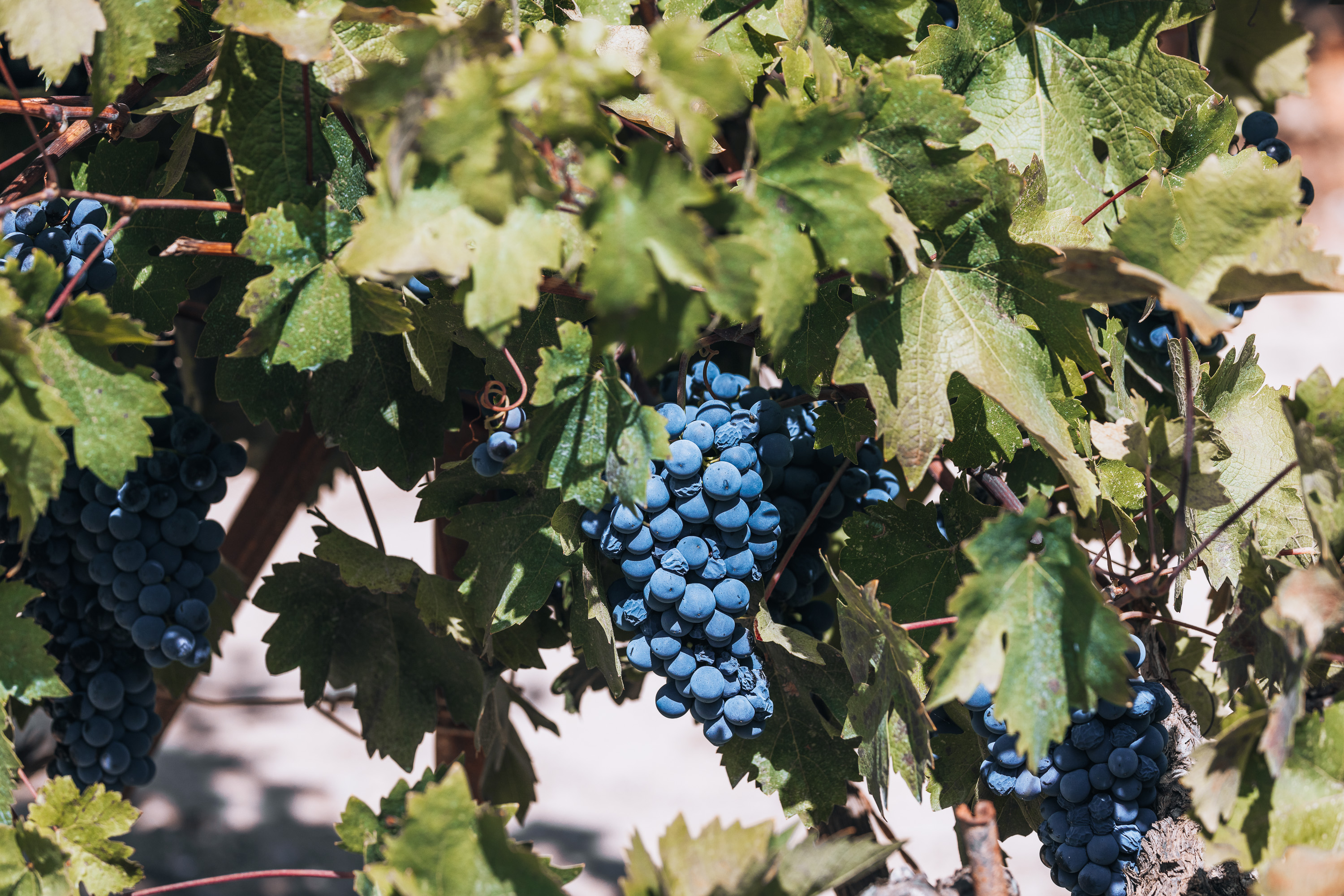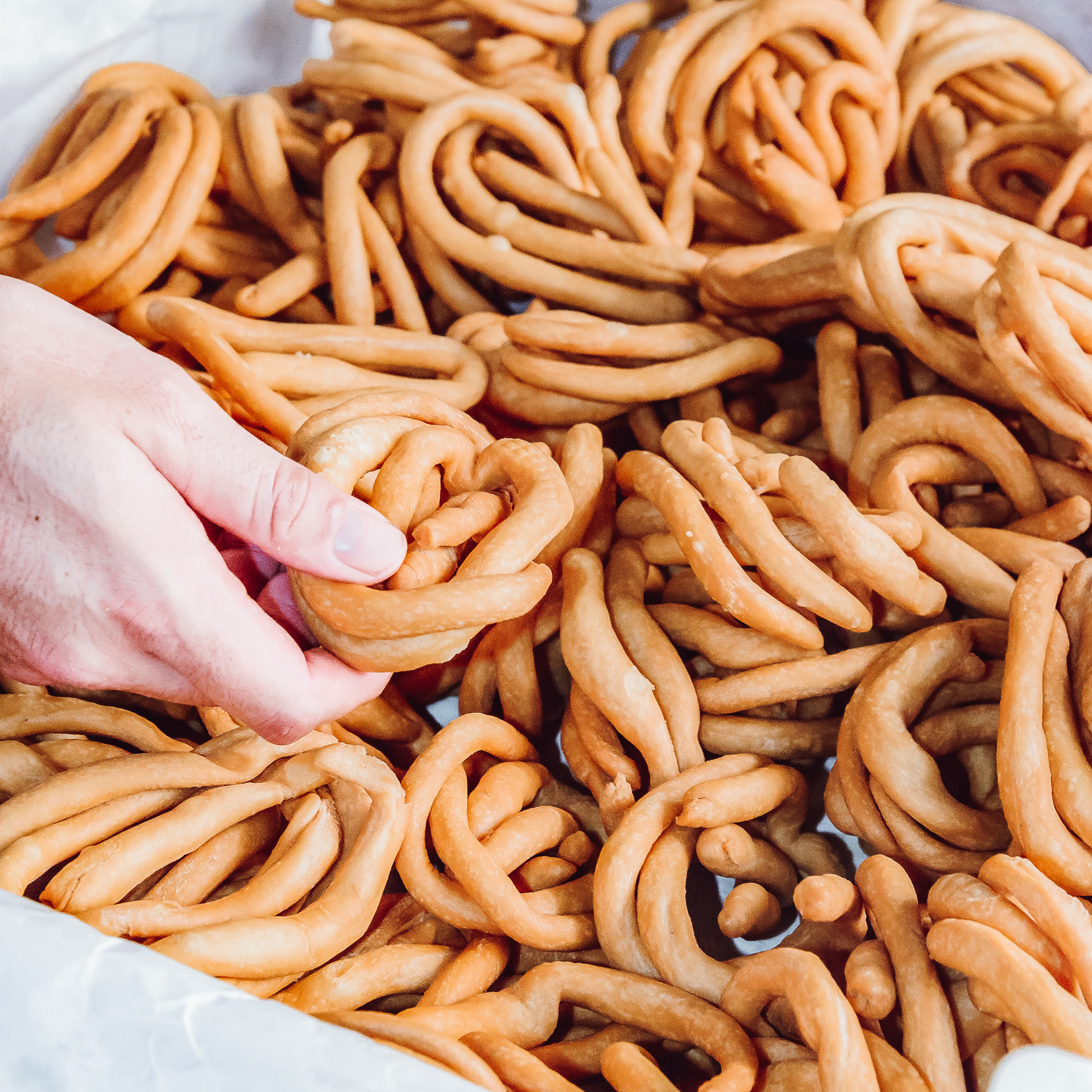Top destinations in the Mainalo and Ziria Mountains
Ziria, Mainalo: Greece – the sea, the sun, the sand… and the mountains! There is so much to explore and discover in the Peloponnese, and if you are looking for a special winter break the area round the Mainalo and Ziria Mountains is the place to go.
Each mountain has its own "personality" which you’ll get to know as you visit the traditional mountain villages perched on the foothills. Trikala Corinthia, Goura, Stemnitsa, Dimitsana, Vytina – the names might not be as familiar as Epidaurus, Sparta and Mycenae, but for those in the know there is a warm welcome beside a roaring wood fire waiting for you...
This is Greece with crystal clear air and a wonderfully invigorating scent of pine trees from the forests. It is warm, friendly tavernas where the tables are laden with traditional foods and local wines, and maybe handmade sweets for dessert if you’ve still got room! It is cobblestone lanes with stone-built houses, old churches, monasteries, stone bridges and old pathways and trails through the woods, past waterfalls and on to the next village. And more than anything, it is the welcoming people who live their customs and traditions and are happy to take time out from their day to talk to you about village life.
Each trip brings you closer and closer to the "soul" of the area - its people, its history and its culture. And if you happen to be there at Christmas when the villages are sprinkled with snow, it becomes something - truly magical!
MOUNTAIN ARCADIA/ MOUNT MAINALO
Dimitsana
This is a lively village with cobbled pedestrian walkways, amazing views and unspoilt traditional architecture. Leave your car and your worries in the carpark and set off on foot to discover a corner of Greece that you might not see in the tourist brochures. As you explore you’ll find stone-built houses, old churches, shops, tavernas and guesthouses, and every time you turn a corner you’ll see another picture-perfect scene. The village is high up above the Lousios gorge, so no matter where you are you can hear the river running below. Nowadays Greeks associate Dimitsana with mountain get-aways, fresh air and nature, but it used to be famed for its gunpowder! In fact, during the Greek war of Independence in 1821 its gunpowder mill supplied ammunition to fighters all over Greece -Dimitsana was quite literally the engine of the revolution!
What to see:
- The Open-Air Water Power Museum is a charming and informative museum. It will give you a good understanding of the role played by water-powered machinery and the watermills that were based around the Lousios River in village life. It is an one of a kind open-air museum and well worth a visit.
- The historic Public Library of Dimitsana, founded in 1764.
- The old mansions and the majestic stone churches such as Vlachopanagia, the Church of the Metamorfosi and Agios Georgios.
Walking. Dimitsana is the first stop on «The Menalon Trail» which runs from Stemnitsa to Dimitsana and then from Dimitsana to Zygovisti.
From the Open-Air Water Power Museum you can walk down to ancient Gortys which is famous for the Asclepieion (temple dedicated to Asclepius the ancient Greek god of medicine), that operated there for centuries. It was a place of healing and spiritual upliftment, and it’s perhaps not too far-fetched to say that some essence of that remains today.
Stemnitsa, the Prodromos Monastery and The Holy Monastery of the Philosopher
Stemnitsa is another gorgeous mountainous destination of the Peloponnese, with a stunning setting. It is perched at the foot of the Klinitsa mountains, 1100 metres above sea level. Here you are literally surrounded by nature as the village overlooks 4 ravines filled with pine trees, plane trees, walnut trees and chestnut trees, so it is little wonder that Stemnitsa is known as one of the most beautiful traditional villages in the Peloponnese.
The houses in Stemnitsa were nearly all built by skilled craftsmen from Lagkadia who were, and still are, renowned throughout Greece for their elegant and distinctive stone buildings. Up until the beginning of the 20th century, groups of craftsmen and tradesmen used to set out from the village of Lagkadia and journey for days to reach the site where they would be working. These masterpieces, the stone houses and bridges that never compete with the landscape but instead seem to almost be part of it, are their legacy.
The villagers of Stemnitsa, however, had their own art form and for centuries now they have been known as exceptional silversmiths! This tradition is very much still alive, not least in the Stemnitsa School of Silver and Goldsmithing where young people from all over Greece come to learn these traditional arts.
What to see:
- The Roilos tower and the Bournazos mansion. The notable village churches, such as 12th century Panagia Bafero, the 17th century Treis Ierarches and the 15th century Zoodochos Pigi.
- The folklore museum in an 18th century three-story building.
What to eat: There are plenty shops selling traditional products where you can find chylopites (handmade local pasta), honey, preserves and more.
Stemnitsa is a great place for walking, and one of the best paths will take you from the stunning 16th century Prodromos Monastery to the equally beautiful Old Holy Monastery of the Philosopher. Your starting point, Prodromos Monastery, is not far from the village and is built almost entirely in a hollow in a rocky cliff above the Lousios gorge. The trail leads you into the gorge and through breath-taking scenery until you reach the famous Philosopher's Monastery, which was founded in 963-967. It has been a great spiritual centre for over 1000 years. Under Ottoman rule it also functioned as a «Hidden School» where children would come to learn to read and write Greek in secret. The new Monastery of the Philosopher is nearby.
Vytina
If you were asked to describe Vytina in two words you would probably say pine trees and stone. Or maybe you could go for nature and mountains. Or then again, maybe cosmopolitan and traditional, or shopping and tavernas. But whatever you see first when you visit Vytina, one thing is for sure -Vytina has a lot to offer. Its location on the slopes of Mount Mainalon means it has been a popular destination for many years so it has a good supply of traditional guesthouses, luxury hotels, restaurants and modern cafes. But don’t worry, it never lost its traditions so you can wander round shops with local products, bakers with the warms smell of sourdough bread wafting into the streets and traditional tavernas.
What to see:
- The central square in the very heart of Vytina, featuring the Agios Tryfonos church which dates from 1846. It is made from the famous black Vytinian marble.
- The «Vytina small forest», as locals call it. It is a wooded recreation area full of pines, firs, maples and acacias.
- The beautiful tree-lined "Dromo tis Agapis" (the road of love) where courting couples used to meet.
- The folklore museum.
- Old Vytina with the ruined houses which were abandoned when their inhabitants moved to the new village. Look out for the church of Panagia built in 1897 and Agioi Apostoloi built in 1831.
Walking. Section 4 of the Menalon Trail connects Vytina with the beautiful village of Elati.
ZIRIA
Trikala Corinthia and the Ziria ski resort
It is said that Trikala Corinthia got its name (tria meaning three and kala meaning good) from three of the good things you can find here: an abundance of water, healthy air and vines that produce good wine.
If we update this idea for more modern visitors, we could add another three good things: nature, outdoor activities and traditional architecture.
The town is built among plane trees and pines, and there are springs and stone drinking fountains, squares, old churches, stone mansions and high towers (some dating back to the 16th century) scattered around all the districts. And wherever you go, the view of the mountains and the sea is amazing. Trikala Corinthia is a place for all seasons -but when it snows you might have trouble believing you’re not in Switzerland!
There are plenty of lovely guesthouses to stay in and traditional tavernas where you can try out local dishes, and of course there are also a lot of modern bars and cafes.
There is a lovely path called "Ancient Myssaion" which will take you on a 45 minute walk from Mesaia (middle) Trikala to Ano (higher) Trikala, passing through a beautiful, shady forest.
If you want to go mountaineering, trekking, mountain biking or off-road trips with your own vehicle or rented quad bikes, Trikala Corinthia is the place to be.
It is a centre for outdoor activities and a lot of companies that organise guided outdoor adventures are based here. It is also popular with mountaineers, especially the paths that start from the nearby villages and lead to Megali Ziria Mountain and the Flambouritsa valley.
Near Trikala, at an altitude of 1,550m, there is a small ski centre with impressive views of the Megali and Mikri Ziria Mountains. It is ideal for beginners and families with children who don’t have any skiing experience.
Goura and Lake Doxa
Imagine yourself sitting in a beautiful square, breathing in the cool, clear air, watching the world go by and casting admiring glances at Taxiarches Church and the stone-built village houses. If this sounds like a good way to relax and find some peace of mind, then Goura could be the destination you are looking for. The village is built high up on the slopes of Mount Ziria, overlooking the Feneos plateau. There’s good food to be had in the local tavernas and you can find excellent accommodation in traditional guesthouses and hotels. You can also go and explore the Skafidia plateau on Mount Ziria and look for the seasonal Dasiou Lake.
And when you leave, don’t forget to take some of the local traditional specialties with you - the famous chickpea dip, local pasta, fresh meats and cheeses.
Lake Doxa is also a “must”. This lake is a magical mirror which reflects the beautiful landscape around it. The hillsides covered in firs, pines and oaks sparkle back at you in the clear water – a picture of serenity. You can walk along the small peninsula to the beautiful Agios Fanourios church, or you can go all the way round the lake on foot, or by bike, and then head up to Agios Georgios Monastery, an imposing three-story monastery that overlooks the lake. And if you are lucky, the monks will treat you to the exquisite rose-water flavoured sweets that they make at the Monastery. And who knows? Maybe when you’re looking through your holiday photos, you’ll taste a hint of rose-water and the tranquillity and beauty of Lake Doxa will come flooding back to you.

